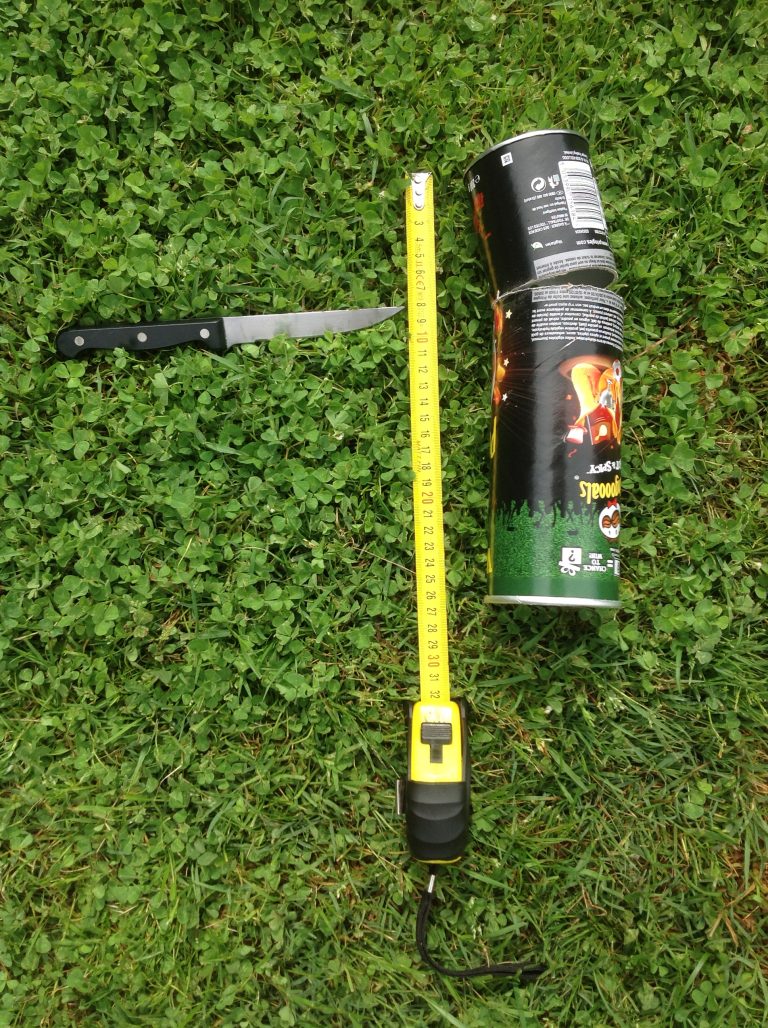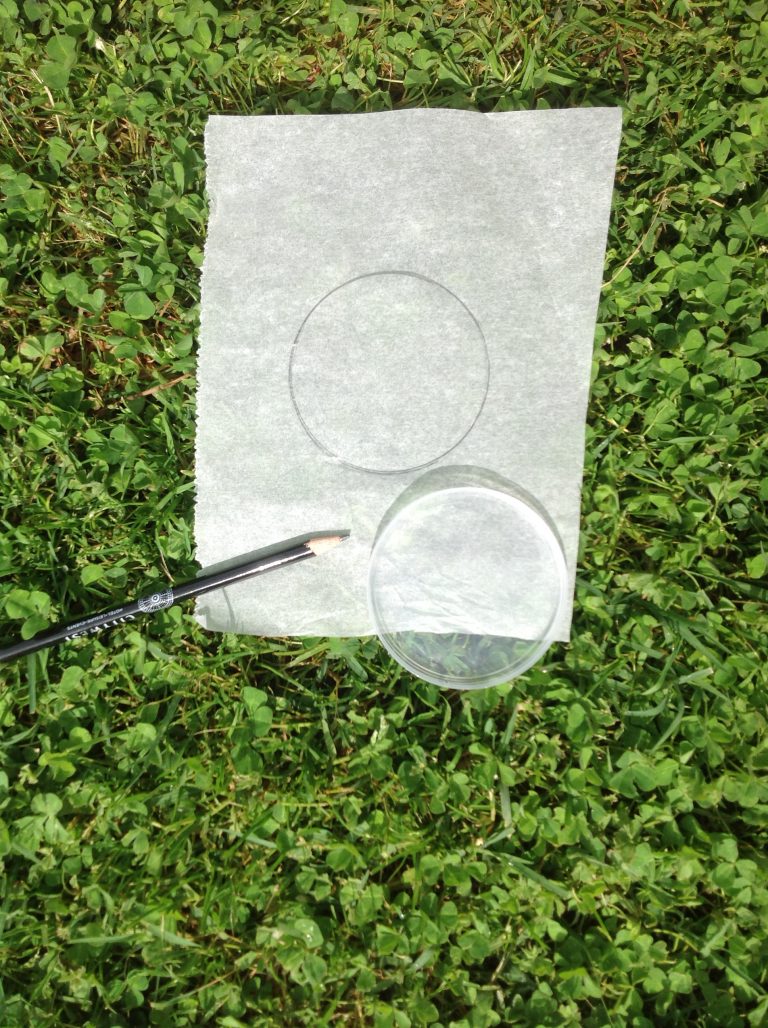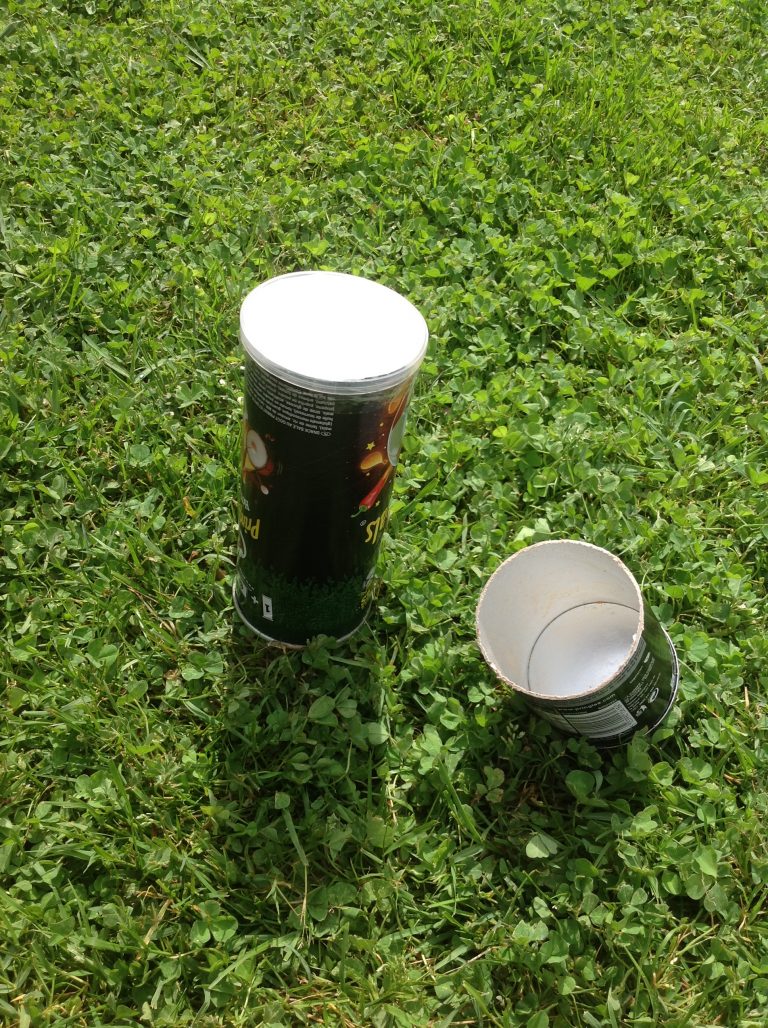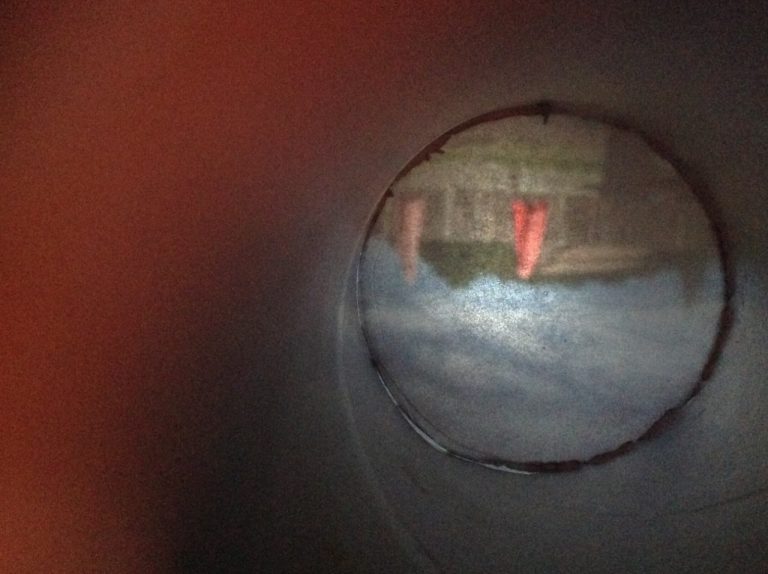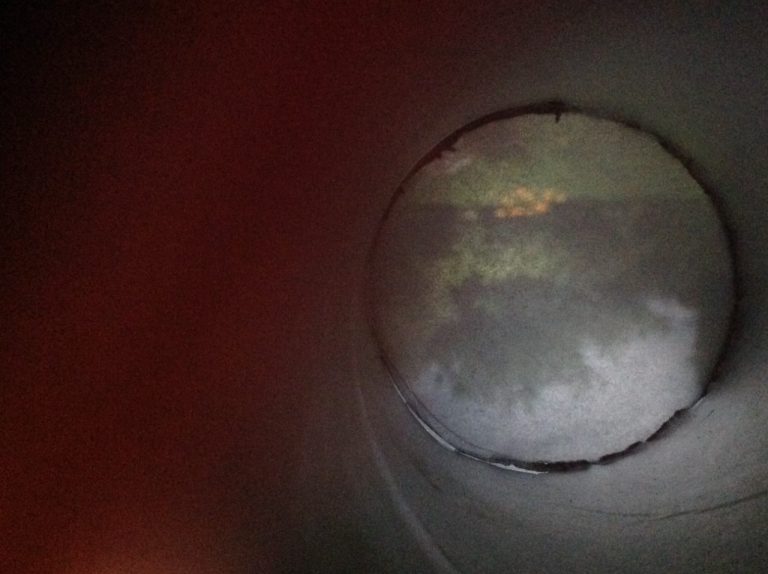The philosopher Plato saw the world as “shadows of reality being projected onto the back of a cave.” Later, many artists used an early type of camera to project the image of outside into a darkened room. They rediscovered a device to help with composing their artworks: The Camera Obscura (or “Dark Room”). They used it transcribe their inspiration onto canvas: Canaletto (exact reproduction of Venice cityscape), or Vermeer (accuracy in portraits).
Artists today still use this type of camera when they are making art. American artist Ann Hamilton used the pinhole camera method to record her surroundings from an unusual perspective. You can find Ann Hamilton’s artworks Portal 5 and Portal 18 in the IMMA Collection. You can also see the pinhole camera device in the work of Lindsay Seers who was an artist in residence at IMMA.
We invite you to discover the magic of vision and marvel anew at our everyday world.
What you need:
1. A cardboard tube with transparent plastic lid (Pringles tube type).
2. A ruler/ measuring tape.
3. A knife (if you’re a child, ask an adult for help or permission first).
4. A piece of grease-proof paper.
5. Scissors.
6. Sticky tape.
7. A black bin bag.
Steps:
- Cut the cardboard tube at 8 cm from the bottom part.
- Cut the circle of grease-proof paper using the lid at template.
- Place the paper circle back into the lid and fit onto the bigger half of the tube.
- Then use sticky tape to stick the small tube part back, with the aluminium bottom at the end.
- Wrap tightly the black bin bag around the whole tube.
- Pierce a pinhole at the bottom of the tube.
Now time to explore:
Put the hollow part of the tube to your eye, blocking the light with your hands if necessary.
Stay in the shade and scan a brightly lit area or person. Let your eye focus. And see the magic happen! Everything will be soft focus and upside down, but every detail and scale will be exactly replicated.
You can take photos, by placing the tube on your phone or tablet camera. Aim and take a snapshot.
You can maybe keep a diary of the same place with different lights? See how the new point of view might change what sticks out of the photo versus what you notice with the naked eye.
And another project:
As a family art project, the brave ones can try the life size format, transforming a whole room into an actual Camera Obscura!
The brighter the day, the better the result, as the sun is the actually source of clarity in the image.
Steps:
1. Choose a small room with a view onto the outside (south orientation works best in Ireland, due to low light level, but now is the right season!).
2. Seal the room completely using black bin bags taped with tape or wide sticky tape to door frames, windows, etc. to black out completely all the natural light.
3. Then use the key hole or pierce an equivalent small opening in the lining of a window. Let your eyes get accustomed to the dark: you will then see the outside world reflected upside down on the opposite wall!
Finally please share your results, your experiments, and artworks with the hashtag #ExploreratHome
